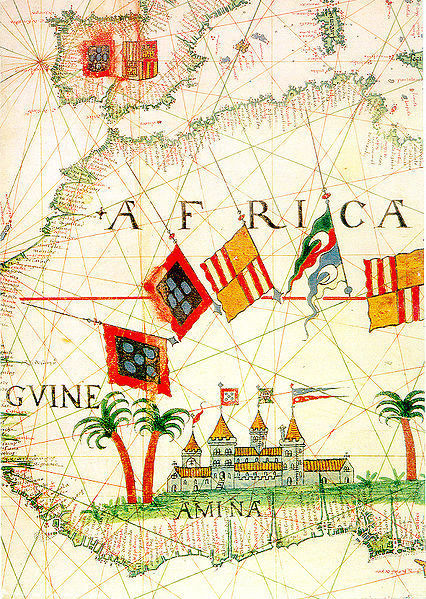The Atlantic Slave Trade
Slavery is most vivid illustration of how local economies were transformed to meet the demands of European colonial trade. In this case, the transformation resulted in the largest system of slavery in history. From the very earliest days of Portuguese exploration down the African coast, Europeans experimented with new modes of production on the basis of slave labor. This, of course, is the mode of production in which primary producers have the least control over what they produce—zero. Among the earliest were sugar plantations set up on the island of Sao Tomé (1522)—off the West African coast, near the Equator—and supplied with slaves from the nearby civilizations on the coast. Over the next century, slave economies would develop throughout the Americas—supplied, as São Tomé had been, with slaves from the West African coast—and all of them producing for European consumption.
There had been slavery in Africa before Europeans arrived, of course—but the “global economy” their arrival utterly transformed the extent of the slave trade. Something on the order of 12,000,000 people were enslaved in Africa between 1500 and 1870; over 1,500,000 perished on the “middle passage” between Africa and the Americas, where they were put to work in sugar and tobacco plantations; between 10-15% of African slaves died within a year of arrival in the “New World.”
Map: Atlantic Slave Trade, 15th-16th centuries
Map: Atlantic Slave Trade, 17th century
Map: Atlantic Slave Trade, 18th century
Each successor to dominance in the global economy invested more heavily in slaving that its predecessor. During the Portuguese sixteenth century, some 370,000 people were enslaved and taken from Africa to Brazil; in the Dutch seventeenth century, that number rose to 1,870,000; in the English eighteenth century, no fewer than 6,130,000 Africans were shipped to America as slaves. Slavery was extremely wasteful of human life, but it was also extremely profitable in supplying high-priced goods to an ever-expanding market of European consumers.
Image right: Detail from a sixteenth century map of Africa, showing the fortress of Elmina, built in 1482 as São Jorge da Mina. It was the first Portuguese trading post on the Gulf of Guinea, and eventually became one of the principal assembly points for slaves destined for the Americas.
Image: Elmina as it appears today
Image: The Ile de Gorée (1600s)
